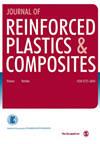利用声发射监测全面分析玻璃纤维增强聚合物加固混凝土梁中的粘结应力传递机制
IF 2.2
3区 材料科学
Q3 MATERIALS SCIENCE, COMPOSITES
引用次数: 0
摘要
本研究调查了玻璃纤维增强聚合物(GFRP)钢筋之间的临界粘结特性,这对于将钢筋用作结构混凝土中的防腐蚀部件至关重要。本研究采用声发射(AE)监测铰链式 GFRP 增强混凝土(GFRP-RC)梁试样,研究了界面粘结劣化和应力传递机制。试样的粘接强度受化学粘附力、机械互锁力和摩擦阻力的制约,本研究对其进行了复杂的检测。对各种 AE 信号参数以及根据 AE 信号参数得出的历史性和严重性指数进行了细致评估,并将其与粘结应力和钢筋滑移变化联系起来。本研究还引入了一种创新方法,即使用哨兵功能来评估粘结劣化和相关机制。本研究的结果证明了 AE 参数在监测脱粘和粘结强度变化方面的可靠性,哨兵功能在评估损坏进展方面的有效性,以及历史和严重性指数在捕捉微观机制转变方面的实用性。此外,本研究还强调了 AE 信号中峰值频率变化的重要性,它是量化机械互锁和界面摩擦的重要工具。研究结果对精确评估和制定有效策略以缓解 GFRP-RC 构件中的粘接劣化做出了重大贡献。本文章由计算机程序翻译,如有差异,请以英文原文为准。
Comprehensive analysis of bond stress transfer mechanisms in glass fiber-reinforced polymer-reinforced concrete beams using acoustic emission monitoring
The present study investigates the critical bond characteristics between glass fiber-reinforced polymer (GFRP) bars, which is essential for the application bars as corrosion-resistant components in structural concrete. The interfacial bond deterioration and stress transfer mechanisms have been investigated in the present study by employing acoustic emission (AE) monitoring in hinged-type GFRP-reinforced concrete (GFRP-RC) beam specimens. The bond strength of the test specimens, governed by chemical adhesion, mechanical interlocking, and frictional resistance, has been intricately examined. Various AE signal parameters as well as historic and severity indices derived from the AE signal parameters have been meticulously evaluated and correlated with bond stress and rebar slip variations. The present study has also introduced an innovative approach of using the sentry function for the assessment of bond deterioration and associated mechanisms. The results of the present study demonstrate the reliability of AE parameters in monitoring debonding and bond strength variation, the effectiveness of the sentry function in evaluating damage progression, and the utility of historic and severity indices in capturing micro-mechanism transformations. The accurate localization of debonding and the qualitative distribution of bond stress have also been demonstrated by through correlations between cumulative AE parameters and rebar slip, Additionally, the present study also highlights the significance of peak frequency variations in AE signals, serving as a crucial tool for quantifying the mechanical interlocking and interfacial friction. The results contribute significantly to precise assessments and development of effective strategies for mitigating bond deterioration in GFRP-RC elements.
求助全文
通过发布文献求助,成功后即可免费获取论文全文。
去求助
来源期刊

Journal of Reinforced Plastics and Composites
工程技术-材料科学:复合
CiteScore
5.40
自引率
6.50%
发文量
82
审稿时长
1.3 months
期刊介绍:
The Journal of Reinforced Plastics and Composites is a fully peer-reviewed international journal that publishes original research and review articles on a broad range of today''s reinforced plastics and composites including areas in:
Constituent materials: matrix materials, reinforcements and coatings.
Properties and performance: The results of testing, predictive models, and in-service evaluation of a wide range of materials are published, providing the reader with extensive properties data for reference.
Analysis and design: Frequency reports on these subjects inform the reader of analytical techniques, design processes and the many design options available in materials composition.
Processing and fabrication: There is increased interest among materials engineers in cost-effective processing.
Applications: Reports on new materials R&D are often related to the service requirements of specific application areas, such as automotive, marine, construction and aviation.
Reports on special topics are regularly included such as recycling, environmental effects, novel materials, computer-aided design, predictive modelling, and "smart" composite materials.
"The articles in the Journal of Reinforced Plastics and Products are must reading for engineers in industry and for researchers working on leading edge problems" Professor Emeritus Stephen W Tsai National Sun Yat-sen University, Taiwan
This journal is a member of the Committee on Publication Ethics (COPE).
 求助内容:
求助内容: 应助结果提醒方式:
应助结果提醒方式:


